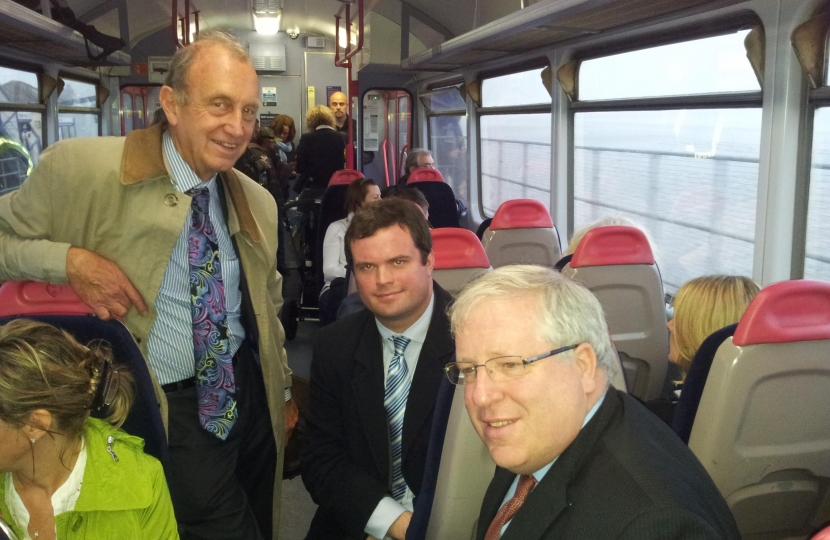
The sight of large waves crashing over an Intercity Train was bound to evoke memories of the storms in February that left our vital rail links hanging in the air. Yet the idea suggested by some of boycotting the Dawlish line to force an alternative to be built was the most counterproductive load of nonsense I have heard for a long time.
Recently I was delighted to welcome Patrick McLoughlin, the Secretary of State for Transport, to the bay so he could see for himself the challenges our railway faces. We travelled on the crowded 15:56 service from Exeter St David’s to Paignton so he would be left with a clear idea not only of the problems, but also the success story in terms of increased passenger usage that the Riviera Line is becoming.
My key theme to the visit was: Look at what we are achieving with out of date rolling stock and stations that last had an upgrade in the Beeching Era. Now think what we could achieve if some of the projects for future investment were implemented.
Thanks to the current government real investment is on its way, with the first new railway station for the bay in decades now funded. In addition a range of bids have just been submitted for upgrades of facilities at Torquay Station and an exciting project to make Paignton Station a quality terminus for a historic town as main line services pull in from London.
After the storms earlier this year the Government committed serious levels of investment to securing our coastal railway for the long term. Tens of millions of pounds have been spent, with further options to increase resilience such as a breakwater to protect the most vulnerable stretch being looked it. The commitment to securing our infrastructure, and the importance at a national level of doing, so was symbolised by the Prime Minister formally re-opening Dawlish Station by boarding the first train to reach it from London Paddington when the line re-opened.
I believe the Great Western Route should remain the mainline to Devon & Cornwall. The rationale applied by Dr Beeching in the early 1960’s as to what line should be retained to provide Intercity services still holds. It is safe to say Beeching did not save Dawlish for emotional reasons, but because it was the fastest route and alternatives (Such as Okehampton) were either too long or would require a new mainline to be built.
This week a few coping stones being moved on top of the sea wall saw demands for an immediate plan for a Dawlish avoiding route, with some suggesting the line should be boycotted to force it to close in favour of another one. These arguments conveniently ignoring the fact a new line would take at least 10 years to build, meaning investment would still need to be made to secure our services today.
The fundamental reason why investment in our railways is being secured is because many more people are using them. 20 years ago 750,000,000 journeys were made each year by train. That figure now stands at 1,600,000,000 and is still growing rapidly. The latest demand projections show a need for four tracks between Exeter and Newton Abbot to accommodate growing usage over the next ten years. In essence by using the coastal railway we are not only securing its future, but making the case for additional capacity more eloquently than any campaign will do.If as suggested by a few a boycott happened all it would do is reduce demand and the reason for building the very line they want.
The region has over the last few months found a welcome sense of unity, save for a few lone voices. This sense of purpose has already seen movement on the A303, with a solution for Stonehenge seeming tantalisingly close.
Our region is on track to see major investment in its railways over the next ten years, but only if we stay united, have a clear message about what improvements would make a difference and vote with our feet by using them.
